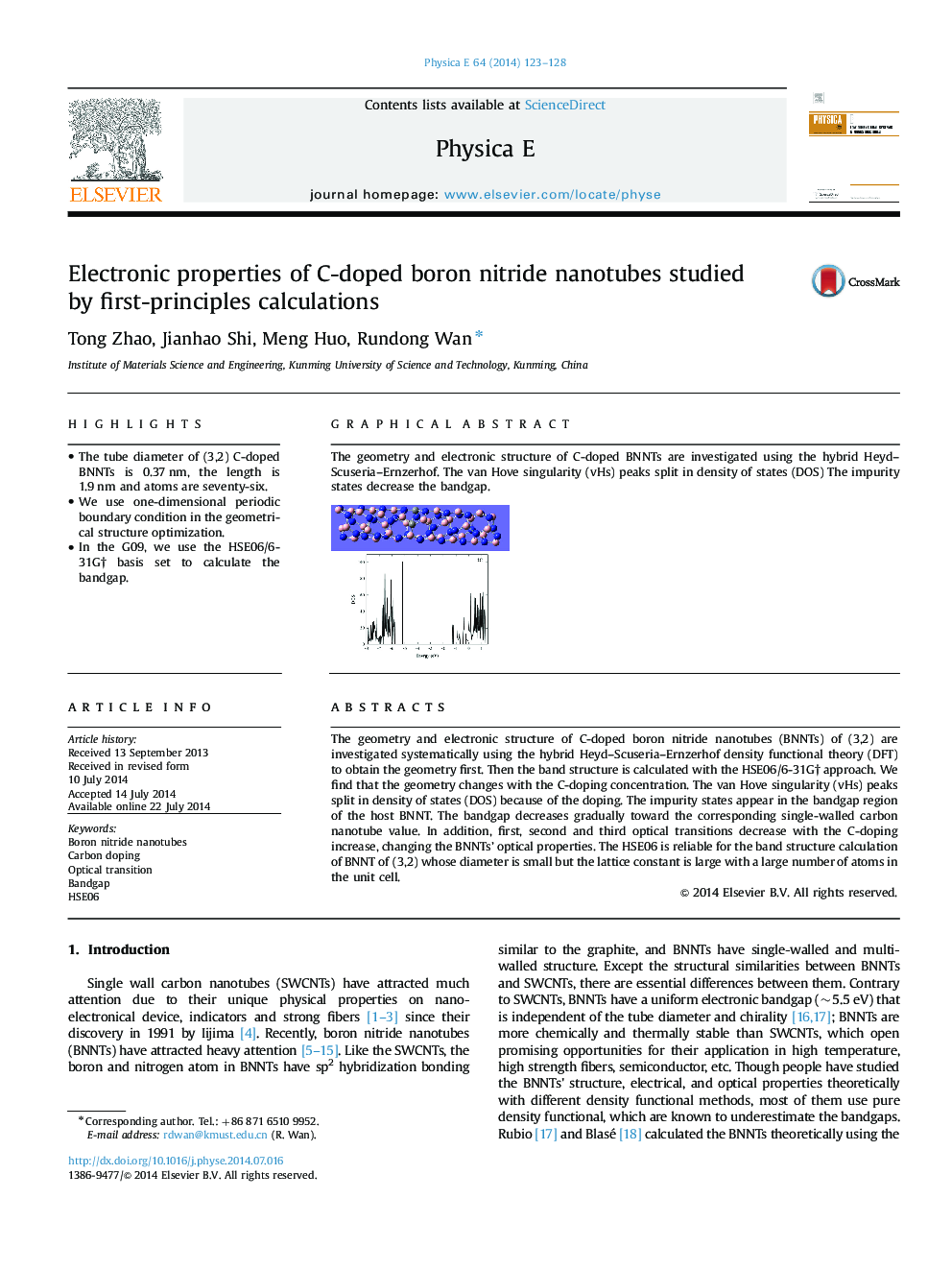| Article ID | Journal | Published Year | Pages | File Type |
|---|---|---|---|---|
| 1544286 | Physica E: Low-dimensional Systems and Nanostructures | 2014 | 6 Pages |
•The tube diameter of (3,2) C-doped BNNTs is 0.37 nm, the length is 1.9 nm and atoms are seventy-six.•We use one-dimensional periodic boundary condition in the geometrical structure optimization.•In the G09, we use the HSE06/6-31G† basis set to calculate the bandgap.
sThe geometry and electronic structure of C-doped boron nitride nanotubes (BNNTs) of (3,2) are investigated systematically using the hybrid Heyd–Scuseria–Ernzerhof density functional theory (DFT) to obtain the geometry first. Then the band structure is calculated with the HSE06/6-31G† approach. We find that the geometry changes with the C-doping concentration. The van Hove singularity (vHs) peaks split in density of states (DOS) because of the doping. The impurity states appear in the bandgap region of the host BNNT. The bandgap decreases gradually toward the corresponding single-walled carbon nanotube value. In addition, first, second and third optical transitions decrease with the C-doping increase, changing the BNNTs’ optical properties. The HSE06 is reliable for the band structure calculation of BNNT of (3,2) whose diameter is small but the lattice constant is large with a large number of atoms in the unit cell.
Graphical abstractThe geometry and electronic structure of C-doped BNNTs are investigated using the hybrid Heyd–Scuseria–Ernzerhof. The van Hove singularity (vHs) peaks split in density of states (DOS) The impurity states decrease the bandgap.Figure optionsDownload full-size imageDownload as PowerPoint slide
